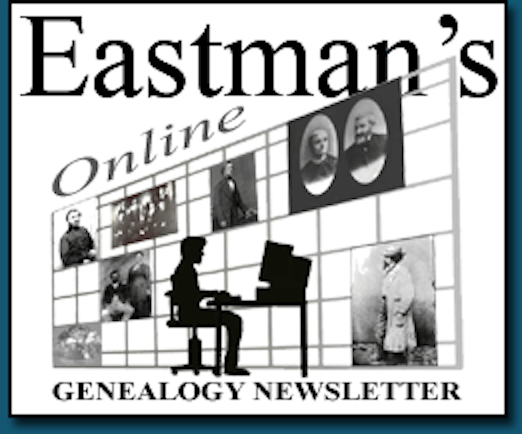While I call these “rules,” they are really suggestions. These “rules” are just a start. I suspect you can think of additional “rules.” If you can add more, please post your suggestion(s) in the comments section below.
OK, here are “Eastman’s Rules of Posting Genealogy Information Online,” a new set of rules invented today:
If you don’t want everyone to know about something and use that something as they wish, don’t post it online! There are no secrets after you post information online. You can claim copyrights or legal protection, but the fact remains that information placed on the web quickly becomes common knowledge. You may be correct in thinking that nobody else should ever re-use your information, but not everyone will agree with you. Regardless of your intentions, some people will re-use your data elsewhere. Getting the data removed later will be difficult and frustrating. Think before you post!
Keep in mind that all search engines will index your site (unless you take steps to do otherwise as listed in Note #1 below), and most of them will cache the information. One web site (www.archive.org which is not a true search engine) will cache your data more or less forever, even if you later change or remove your data.
A few specialty search sites will charge their subscribers a fee to search your site and millions of others. General-purpose search engines, such as Google, are usually free to the user. Specialty search engines that look only for financial data, legal data, real estate transactions, sports scores, etc. typically charge a fee. The more specialized the search engine, the higher the fee. Some charge very high prices. You and I don’t hear much about the fee-based search engines, but they exist, nonetheless.
Facts are not copyrighted, at least not under U.S. law. If your web page contains only names and dates and locations of life events (birth, marriage, death, census entries, military service, etc.), you do not own that information. It is public domain.
If your page(s) contains additional descriptive information, interpretations, stories, or other information that you wrote, the original information you added might be copyrighted. However, the dividing line between copyrighted information and public domain information is often fuzzy. Even legal experts who specialize in intellectual property issues often disagree with each other. You should realize that not everyone is going to agree with your interpretation of the legal issues involved.
Actually, all of this is probably a moot point anyway. Whether legal or not, it is very difficult to force someone to remove copies of information you supplied.
Never assume. You may have strong opinions concerning what is right or wrong, but not everyone will agree with you. Ask yourself, “What will happen if I place this information online?” Be realistic!
The above are a few of my thoughts. Again, if you have further suggestions for additional “rules,” please post your thoughts in the comments section at the end of this article.
Note #1: If you do want to place genealogy information (or any information) on the World Wide Web and do not want your information to be found by search engines, there is a simple way to do so: create a ROBOTS.TXT file and place it on your web site. Thousands of web sites do this already when they don’t want certain information to become too public. There are many web sites that will explain ROBOTS.TXT and tell you how to add such a file to your site. Start here: http://www.google.com/search?source=ig&hl=en&q=create+robots.txt+file&btnG=Google+Search. Once you add a ROBOTS.TXT file to your web pages, your information will disappear from all search engines within a few months. However, don’t be surprised if nobody visits your site anymore. It will be rather well hidden.
If you are willing to have some search engines index and cache your site but do not want all search engines to do so, you can be selective. Again, the solution is a ROBOTS.TXT file. You can exclude specific search engines by name. The format of the commands is a bit tricky, so study the instructions carefully. Start here: http://www.google.com/search?source=ig&hl=en&q=create+robots.txt+file&btnG=Google+Search.
Note #2:mYou should realize that search engines are not perfect. Even the specialty search engines designed for a specific purpose will erroneously add some extraneous data. The search engine’s filters may interpret words differently than a human would. For example, a financial services search engine might add your genealogy data to its search engine if your ancestor was named James Penney or Ezekiel Dollarhide. Likewise, a genealogy-specific search engine may add a page that describes the article describing music but entitled “roots of New Orleans jazz,” and a real estate search engine may add its own information about “the history of the House family.”
 Latest News Articles
Latest News Articles Do you have an RSS newsreader? You may prefer to use this newsletter's RSS feed at:
Do you have an RSS newsreader? You may prefer to use this newsletter's RSS feed at: